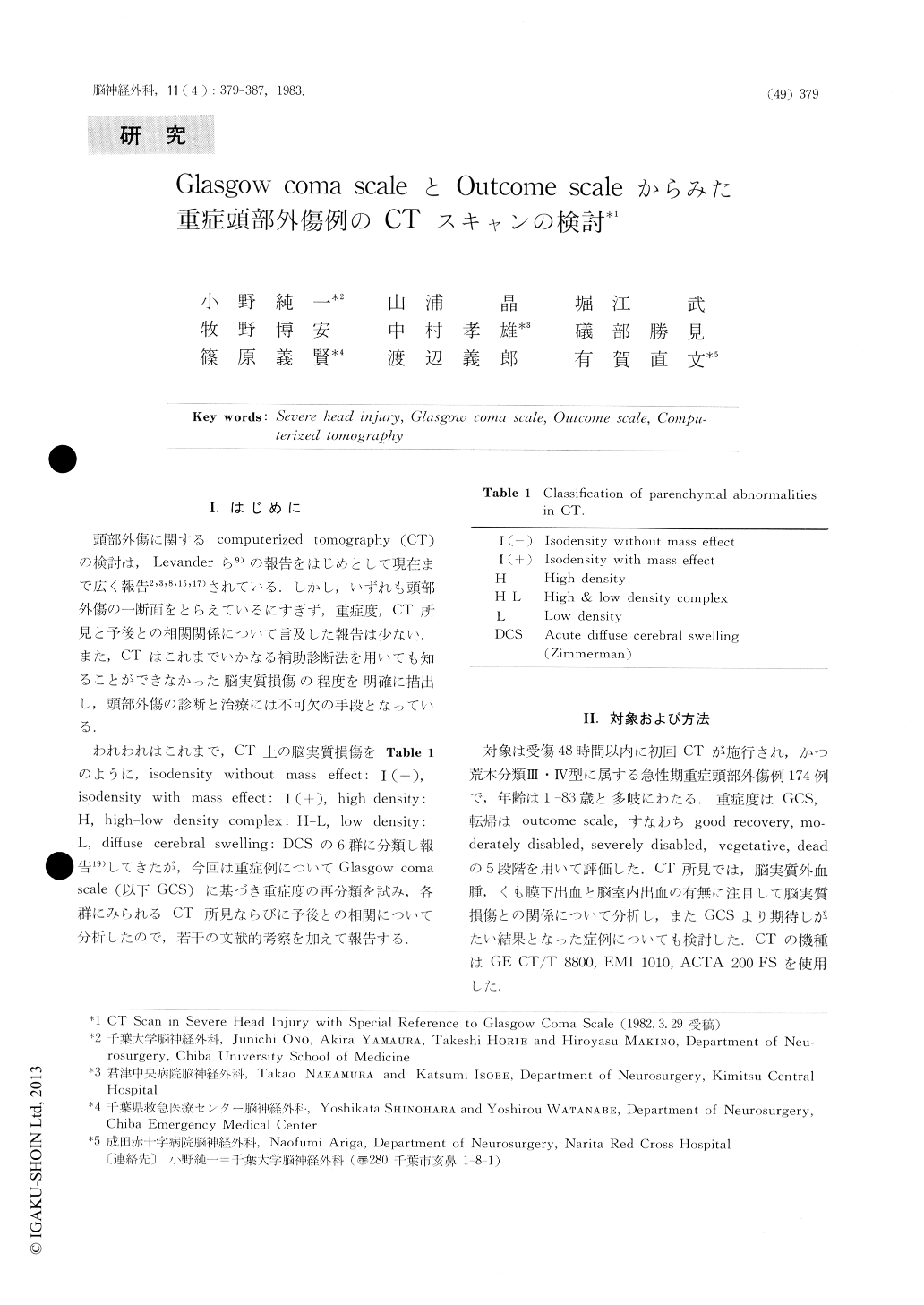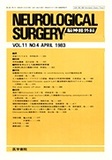Japanese
English
- 有料閲覧
- Abstract 文献概要
- 1ページ目 Look Inside
I.はじめに
頭部外傷に関するcomputerized tomography(CT)の検討は,Levanderら9)の報告をはじめとして現在まで広く報告2,3,8,15,17)されている.しかし,いずれも頭部外傷の一断面をとらえているにすぎず,重症度,CT所見と予後との相関関係について言及した報告は少ない.また,CTはこれまでいかなる補助診断法を用いても知ることができなかった脳実質損傷の程度を明確に描出し,頭部外傷の診断と治療には不可欠の手段となっている.
われわれはこれまで,CT上の脳実質損傷をTable1のように,isodensity without mass effect:1(—),isodensity with mass effect:I(+),high density:H,high-low density complex:H-L.low density:L,diffuse cerebral swelling:DCSの6群に分類し報告19)してきたが,今回は重症例についてGlasgow comascale(以下GCS)に基づき重症度の再分類を試み,各群にみられるCT所見ならびに予後との相関について分析したので,若干の文献的考察を加えて報告する.
CT scan demonstrates the invaluable information about the parenchymal lesions of head injuries. The parenchymal lesions were classified into 6 categories; 1) isodensity without mass effect: I (-), 2) isodensity with mass effect: I ( + ), 3) high density : H, 4) high-low density complex: H-L, 5) low density: L, 6) diffuse cerebral swelling: DCS.
Glasgow coma scale (GCS) and outcome scale (GOS) were international practical scales for the evaluation of severity and prognosis of severe head injuries.
One hundred and seventy-four cases with severe head injury were analysed.

Copyright © 1983, Igaku-Shoin Ltd. All rights reserved.


